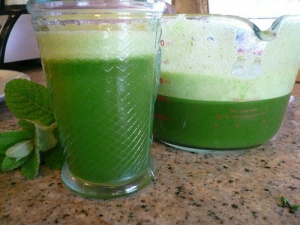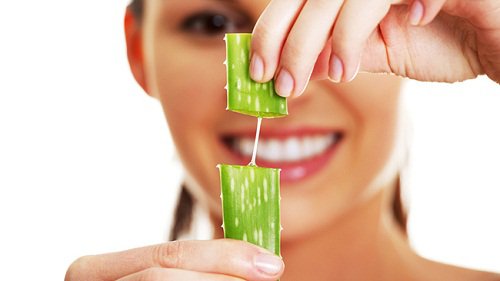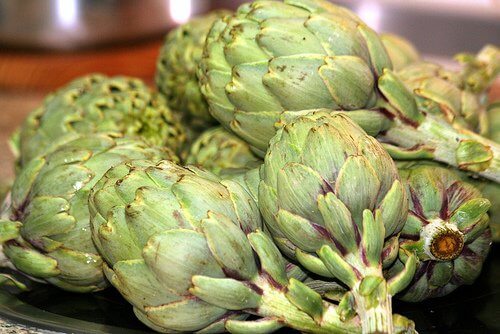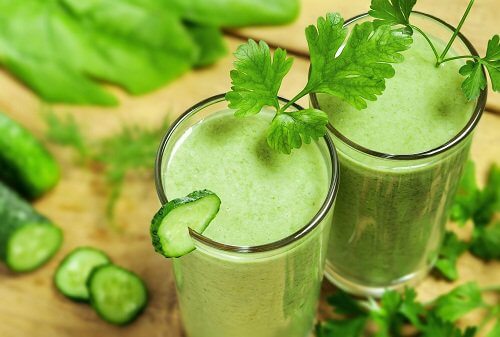How Chlorophyll Can Be An Amazing Natural Remedy

Chlorophyll offers some wonderful benefits to the human body.
When your blood absorbs this green liquid, it could help boost your metabolism, fight diseases, produce more cells, and much more.
The word “chlorophyll” comes from the Greek word “khloros” for light green and “phylon” for leaf, and it’s the pigment that all plants contain and need to survive. Two French chemists discovered it in 1817.
Plants need it because it’s necessary for carrying out photosynthesis, which is the process that creates oxygen by “mixing” water and sun.
This is why all plants have at least a little green in them.
An interesting fact about chlorophyll is that it has a similar structure to that of human blood, except for the color (the red color comes from the hemoglobin) and the compound (chlorophyll is a magnesium compound and human blood is iron).
Consequently, a lot of people think of chlorophyll as plant blood.

Health Benefits of Chlorophyll
This pigment can provide some amazing health benefits. It’s an incredible substance that may help several of your organs function more effectively.
Let’s take a look at some of the benefits of consuming chlorophyll:
May Detox Your Body and Supply Oxygen
If you regularly eat foods that provide chlorophyll, it can add more oxygen to your blood and increase its production. This can help your heart produce more oxygenated cells. And more oxygen flowing through your veins helps cleanse the body.
For example, there’s proof that it prevents the negative effects of radiation and also gathers up and disposes of the heavy metals in your cells.
Maybe “Iron Man” could give chlorophyll a try to get rid of all that extra metal in his blood!
As if that weren’t enough, chlorophyll can also help clean your colon and entire intestinal tract. This means it could aid in preventing diseases like cancer.
Your cholesterol is benefitted too since chlorophyll can help lower unhealthy triglyceride levels.

May Improve Your Immune System
Bacteria have a hard time surviving in places with an abundance of oxygen.
As we’ve already mentioned, chlorophyll provides your body with a lot of oxygen. This is how it can protect itself against harmful bacteria and disease-causing agents that try to develop.
You might like:
9 Foods That Strengthen Your Immune System
It’s also a powerful neutralizer which means it may help prevent other types of bacteria from thriving in your body. People who have a weak immune system shouldn’t think twice about adding more chlorophyll to their diets.
In fact, it’s highly recommended for people who suffer from acquired immunodeficiency diseases, like HIV.
Additionally, chlorophyll may speed up the healing process if you have any open wounds, making it perfect for recovering patients, or for people undergoing invasive treatments such as chemotherapy or dialysis.
May Improve Your Digestion
Chlorophyll is extremely good for your entire digestive system. It may also help improve the functioning of your colon, liver, bladder, and stomach.
When the chlorophyll hits your stomach, it may break down and help gets rid of calcium oxalate stones, also known as kidney stones.
This is why this natural ingredient is perfect for anyone who has gallstones, liver problems, an inflamed colon, excessive production of stomach acid, etc.

May Help Prevent Cancer
Chlorophyll may eliminate harmful toxins that produce fatal illnesses such as cancer. These toxins can enter your body through food sources or pollution.
Since it has large amounts of vitamin A, vitamin C, and vitamin E, it’s also a powerful antioxidant and can be the perfect anti-inflammatory.
May Stimulate Estrogen Production
Chlorophyll may stimulate estrogen (the “female” hormone) production.
You might like:
The Benefits of Estrogen in Your Diet
This could help prevent and treat ovarian cysts, clots, and irregular, extremely painful, or excessive menstruation. It may also aid in getting rid of vaginal infections.
May Help Treat Respiratory Conditions
As we’ve already mentioned, chlorophyll provides oxygen to your body’s cells.
This makes it a great natural remedy for people who suffer from respiratory infections or illnesses. It can also be very helpful in getting rid of colds or a cough.
May Improve Oral Hygiene
Chlorophyll can help get rid of bad breath. It may also be helpful in treating pyorrhea, which is a condition that causes your teeth to fall out.
What is the Best Source of Chlorophyll?
Obviously, you don’t need to start grazing on every plant you see to get your chlorophyll fix.
This amazing pigment is present in all green vegetables. To take full advantage, however, you should begin eating more of the following foods:
Spinach
Spinach is the vegetable with the largest amounts of this pigment. It’s best to eat it raw or steamed, like in a salad or as a side dish.
Other Leafy Greens
You should definitely eat spinach, but don’t forget about eating all of the other leafy greens, too.
These include chard, lettuce, broccoli, cabbage, asparagus, and celery. You should always try to eat these vegetables as raw as possible.
Green Tea
Green tea can be extremely beneficial to your health and contains both chlorophyll and antioxidants. Not only can it help lower your cholesterol, but it may also boost your metabolism, allowing you to lose weight more easily.
All cited sources were thoroughly reviewed by our team to ensure their quality, reliability, currency, and validity. The bibliography of this article was considered reliable and of academic or scientific accuracy.
-
Engel, V. L., & Poggiani, F. (1991). Estudo da concentração de clorofila nas folhas e seu espectro de absorção de luz em função do sombreamento em mudas de quatro espécies florestais nativas. Revista Brasileira De Fisiologia Vegetal.
-
Niemiec, B. A. (2013). Periodontitis. In Veterinary Periodontology. http://doi.org/10.1002/9781118705018.ch5.
- Zortea K, Franco VC, Francesconi LP, Cereser KM, Lobato MI, Belmonte-de-Abreu PS. Resveratrol Supplementation in Schizophrenia Patients: A Randomized Clinical Trial Evaluating Serum Glucose and Cardiovascular Risk Factors. Nutrients. 2016;8:73.
This text is provided for informational purposes only and does not replace consultation with a professional. If in doubt, consult your specialist.








